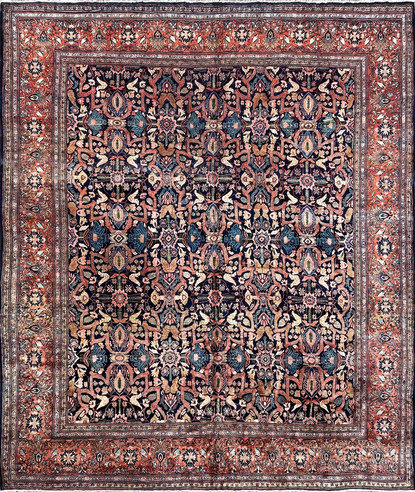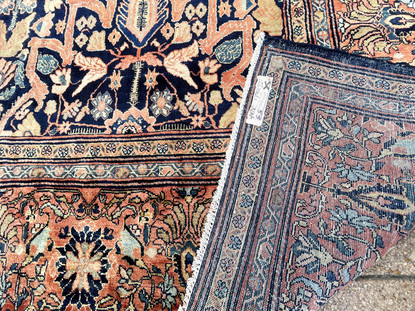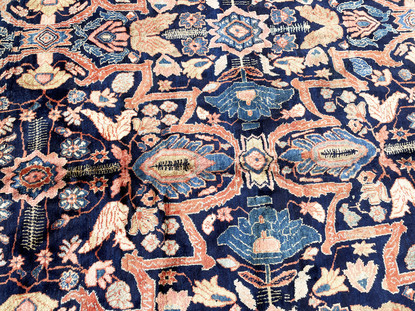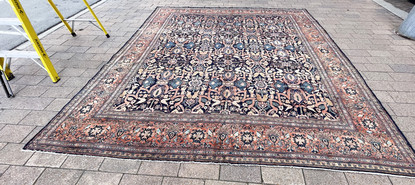Antique Persian Feraghan Sarouk, The Most unusual
Click image to enlarge it
Size:
10'10" x 13'3" - 330cm x 404cm
Origin:
Period:
C 1880
Materials:
Wool pile, cotton warp & weft
Condtion:
Excellent
Price:
$36,900.00
Item#:
15150
Notes:
Introducing the exquisite Sarouk Feraghan, a timeless rug dating back to the late 1880s and remarkably preserved in excellent condition.
Woven in and around the picturesque region of Arak in northwest Iran, this rug boasts a captivating allover design. The artistry within features a harmonious blend of suave curve-linearity, geometric styles, and enchanting depictions of birds. Notably, the Farahan Sarouk rugs exhibit a unique combination of angular drawing akin to Herizes and Serapis, albeit on a much finer scale suitable for classical designs. The delicacy of the design seamlessly aligns with the weaving technique of Farahans, known for its tight and fine craftsmanship.
The color palette of the Sarouk Farahan rugs is a testament to its richness and subtlety. With a focus on soft yet vivid hues like blue and terracotta reds, delicate blues and greens, as well as pastel apricots and yellows, the rug emanates a muted and well-balanced spectrum of colors. Executed with an asymmetrical knot on a cotton ground, the dyed blue or occasional pinkish red wefts contribute to the overall finesse of the weave. The rug's patterns artfully combine tribal and traditional designs, often featuring a floral border with a gentle apple or pistachio green ground.
Feraghan, crafted between the 1800s and 1910s in the northern region of Arak, was meticulously created for the Persian aristocracy and export to the US and Europe. Referred to as Feraghan-Sarouk or simply Sarouk, these rugs stand out with their double-wafted, heavier construction and a higher knot count compared to those produced in the village of Sultanabad. The fields commonly showcase enchanting hues of blue, ivory, or terracotta, adorned with large medallions or depictions of trees and birds. Finding a matching pair of these rugs is a rarity, underscoring their individuality and uniqueness.







